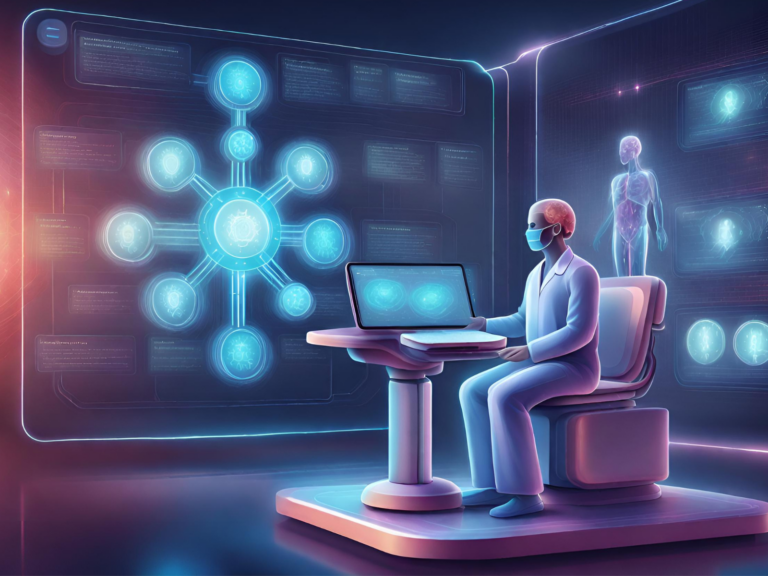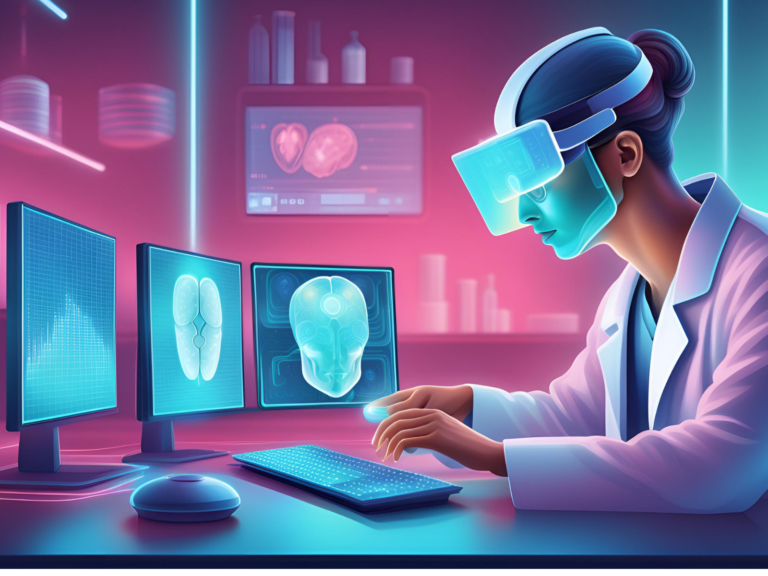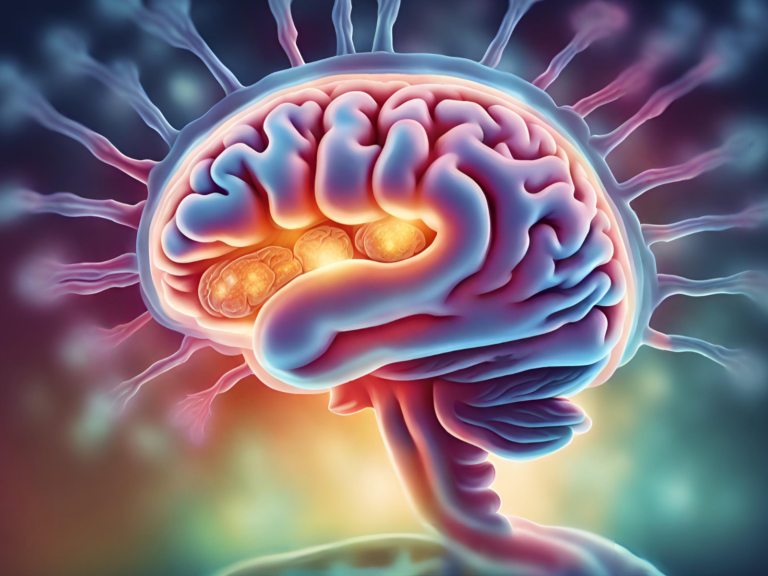Introduction to Generative AI in Healthcare
The healthcare sector has always been at the forefront of adopting innovative technologies to enhance patient care, streamline operations, and push the boundaries of medical research. From the invention of the stethoscope to the development of telemedicine, each technological advancement has paved the way for a more efficient and effective healthcare system. In recent years, one technology, in particular, has garnered significant attention for its potential to revolutionize the medical field: Artificial Intelligence (AI).
Today, AI-powered tools assist radiologists in detecting anomalies in X-rays, help predict patient deteriorations in real-time, and even assist surgeons during intricate procedures. But while these applications are indeed groundbreaking, there’s another subset of AI that promises even more transformative changes: Generative AI.
What is Generative AI?
At its core, Generative AI is about creating something new. While traditional AI models are designed to make predictions or classifications based on existing data, generative models aim to produce new, previously unseen data. Imagine a machine not just analyzing a medical image but creating a realistic one based on its understanding. The implications of this are vast and varied, from synthesizing new drug compounds to generating personalized treatment simulations.
Generative AI Applications
The applications of Generative AI are vast and varied. In the world of art and entertainment, generative models have been used to create new pieces of music, artwork, and even entire video game levels. In the realm of healthcare, the potential applications are even more profound. Imagine generating 3D models of organs for surgical planning or simulating how different drugs might interact within the human body.
Generative AI Healthcare Applications & Use Cases
The potential of Generative AI in healthcare is immense. However, like all powerful tools, it comes with its set of challenges and considerations.
Generative AI in Medical Imaging
Generative AI’s primary strength in medical imaging lies in its ability to enhance, refine, and even create realistic medical images. By enhancing the clarity, expanding the dataset, and even simulating future scenarios, it offers tools that can significantly improve patient care.
Generative models can improve the resolution of existing images, making it easier to detect minute anomalies. For instance, a blurry MRI can be sharpened, revealing details that might have been missed. In cases where data is scarce, Generative AI can produce additional images for training purposes, ensuring that machine learning models used in diagnostics are well-trained.
Generative models can simulate how a disease might progress in a patient, offering a visual representation of potential future scenarios. In situations where it might be risky or impossible to obtain certain images, Generative AI can create synthetic yet realistic images based on available data. This can be particularly useful in training medical professionals.
Generative AI in Drug Discovery
Generative AI offers a transformative approach to drug discovery, promising faster, more efficient, and potentially more personalized therapeutic solutions. As the technology matures and integrates more deeply with the pharmaceutical industry, we stand on the cusp of a new era in medicine.
Generative AI, with its ability to analyze vast datasets and generate new data, offers several advantages in drug discovery. Generative models can predict how different compounds will interact with biological targets, reducing the need for extensive screening. AI can design new molecules that are more likely to be effective against a target, based on the data it has analyzed.
Generative AI can suggest modifications to existing molecules to enhance their efficacy or reduce potential side effects. Generative models can simulate how a drug might interact with various proteins in the body, predicting potential side effects or contraindications.
Generative AI in Personalized Medicine
Generative AI’s capabilities align perfectly with the needs of personalized medicine. The integration of Generative AI into personalized medicine promises a future where treatments are not just based on symptoms but are tailored to an individual’s unique genetic and molecular profile. This shift towards a more individual-centric approach has the potential to revolutionize patient care, offering more effective treatments with fewer side effects.
Generative models can analyze an individual’s genomic data, identifying mutations or patterns that might influence disease risk or drug response. AI can simulate how a patient might respond to different treatments, allowing clinicians to choose the most effective option.
Generative AI can analyze real-time data from wearable devices, adjusting treatment plans based on a patient’s current health status. By analyzing a patient’s medical history alongside vast medical datasets, AI can predict potential future health issues, enabling preventive measures.
Ethical Problems in Generative AI
The integration of Generative AI into healthcare, while promising, brings forth a myriad of ethical considerations. As with any transformative technology, the potential benefits are accompanied by challenges that need careful contemplation and proactive management.
Generative AI’s efficacy is rooted in its ability to analyze vast amounts of data. However, this raises concerns about it. How is patient data being collected and used? Are patients adequately informed and have they given explicit consent? With cyber threats on the rise, how secure is the patient data? What measures are in place to prevent breaches? Even if data is anonymized, sophisticated algorithms might de-anonymize it. How can patient anonymity be ensured?
AI models are only as good as the data they’re trained on. If this data is biased, the models can perpetuate or even exacerbate these biases. Is the training data representative of diverse populations in terms of race, gender, age, and other factors? If not checked, biased AI models can lead to disparities in healthcare outcomes for underrepresented groups.
As AI systems make more decisions, questions about their reliability and accountability arise. How reliable are AI-driven diagnoses and treatment recommendations? What’s the acceptable error rate? If an AI system makes an incorrect recommendation leading to adverse outcomes, who is held accountable? The developers? The healthcare providers?
For AI to be effectively integrated into healthcare, both clinicians and patients need to trust it. Many AI models, especially deep learning ones, are seen as “black boxes” where their decision-making processes are not transparent. How can these processes be made more understandable? How can clinicians be trained to collaborate effectively with AI, understanding its recommendations while also relying on their expertise?
Conclusion
As we journeyed through the intricacies of Generative AI in healthcare, it’s evident that we stand at the cusp of a transformative era. From enhancing medical imaging to revolutionizing drug discovery and personalizing treatment plans, the potential applications of Generative AI are vast and varied. However, as with all powerful tools, its integration into healthcare must be approached with a balance of enthusiasm and caution.
Generative AI offers the promise of faster diagnostics, more efficient drug discovery, and highly personalized treatment plans. Its ability to analyze vast datasets and generate new insights can significantly enhance patient care and outcomes.
Beyond the technical and logistical challenges, there’s an ethical imperative to ensure that the benefits of Generative AI are accessible to all. Healthcare equity must be at the forefront of all discussions and implementations.







